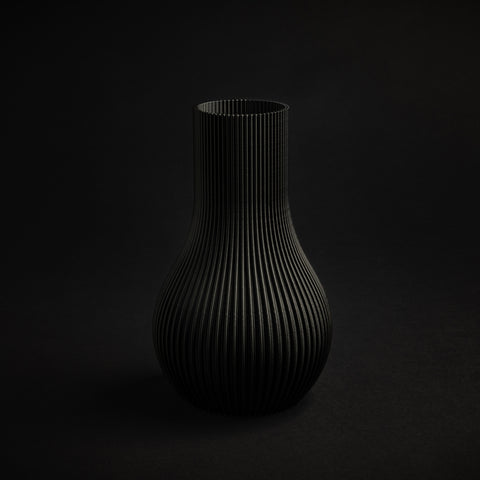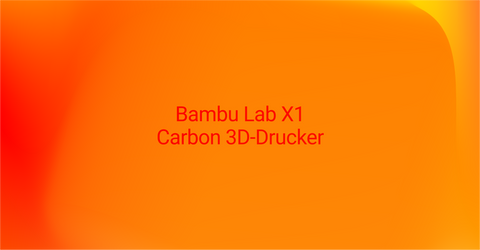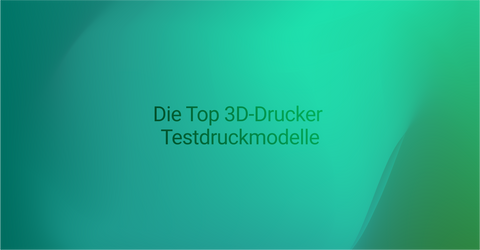TL;DR: A test print object is important in 3D printing because it helps to ensure optimal settings for the best possible print quality and to identify and correct problems such as layer adhesion, over-extrusion or warping before the final model is printed.

Discover the best 3D printer test print models for 2024 and find out which models stand out for their quality, precision and versatility.
As technology advances and demand for 3D printers increases, the choice of test print models becomes more and more important. In 2024, there are a variety of powerful and impressive models on the market that are worth taking a closer look at. In this article, we want to give you an overview of the top 3D printer test print models for 2024 while explaining the role of these models in 3D printing technology. In addition, we take a look at future trends in the industry and discuss the evaluation criteria for 3D printer test print models.
Overview of 3D printing technology
First, it is important to provide an overview of 3D printing technology. This innovative process builds a real object layer by layer by applying a material, such as plastic or metal, in molten or powdered form to a substrate. This process makes it possible to create complex structures that would not be possible with conventional manufacturing methods. It opens up a variety of applications, from prototype development to the manufacture of customized products.
The role of test print models in 3D printing technology
Test print models play a crucial role in the development and optimization of 3D printing processes. They serve as prototypes to evaluate the quality of the print and make possible improvements. In addition, they allow manufacturers to test and optimize the speed and efficiency of their printers. Test print models are therefore essential to maximize the performance of 3D printers and ensure the quality of the printed products.
Future trends in 3D printing technology
3D printing technology is constantly evolving, and there are some promising trends emerging in the coming years. One of these trends is the use of new materials and processes to enable higher quality and more durable prints. Another trend is the improvement of the speed and efficiency of printers to reduce production time. In addition, the usability and customizability of the devices will also continue to improve in the future to make the use of 3D printers accessible to everyone.
Another promising trend in 3D printing technology is the integration of biocompatible materials. This opens up new possibilities in medicine, such as the production of customized implants or prostheses. By using 3D printing, these implants can be perfectly adapted to the individual needs of the patient, leading to improved recovery and quality of life.
In addition, the miniaturization of 3D printers will also be an important trend. Smaller, more portable devices will allow users to perform 3D printing directly on site without having to rely on external service providers. This is particularly beneficial in areas such as architecture or design, where rapid prototyping and iterative improvements are crucial.
Evaluation criteria for 3D printer test print models
Before we take a closer look at the top 3D printer test print models for 2024, it is important to understand the evaluation criteria that play a role in selecting these models. First and foremost, the quality of the print is crucial. A good test print model should be able to print precise and detailed objects without compromising on resolution. In addition, the speed and efficiency of the printing process is also important. Fast and efficient printers enable higher productivity and faster time to market for products. Finally, the user-friendliness and adaptability of a test print model is also important. An intuitive operating concept and the ability to adapt the device to specific requirements make the printing process easier and more efficient.
Another important aspect when evaluating 3D printer test print models is the variety of materials the printer can handle. The ability to print different materials such as PLA, ABS, PETG and even flexible filaments greatly expands the printer's application possibilities. In addition, the print size plays a crucial role. A test print model with a generous print size allows even larger objects to be printed in one piece, increasing efficiency and reducing the need for assembly or gluing.
Detailed analysis of the top 3D printer test printing models
Now let's take a closer look at the top 3D printer review models for 2024. These models have been selected for their impressive features and performance and offer various benefits for users in different industries.
Model 1: Specifications and Performance
Model 1 is characterized by its high precision and resolution. It can print complex structures with great accuracy, making it ideal for prototyping. In addition, it offers impressive printing speed and efficiency, resulting in shorter production times. The device is also user-friendly and can be customized to individual needs.
Model 2: Specifications and Performance
Model 2 is characterized by its versatility and flexibility. It supports a wide range of materials and allows users to produce different objects with different properties. In addition, it offers good print quality and fast print speed. The model is also user-friendly and easy to operate.
Model 3: Specifications and Performance
Model 3 is characterized by its high speed and efficiency. It is capable of printing large volumes in a short time while providing good print quality. The device is user-friendly and has an intuitive interface that makes the printing process easy and efficient.
The ongoing development of 3D printing technology has significantly expanded the possibilities and areas of application. In addition to prototype development, 3D printing is also used in medicine, architecture and even the food industry. The top 3D printer test printing models for 2024 have been specially designed to meet the needs of these different industries.
Model 1 offers impressive precision and resolution, making it an ideal choice for producing highly detailed prototypes. Its high printing speed and efficiency allow users to shorten their development times and get to market faster. In addition, the device can be customized to meet the needs of different projects.
Model 2, on the other hand, stands out for its versatility. It supports a wide range of materials, including plastics, metals and even biodegradable materials. This opens up new possibilities for producing objects with different properties and applications. The good print quality and fast print speed make this model an excellent choice for users who need high productivity and flexibility.
The importance of choosing the right test print model
Choosing the right test print model has a direct impact on product quality and production time. A high-quality model allows manufacturers to improve the quality of their printed products while reducing production time. By choosing the right test print models, companies can stay competitive and provide their customers with high-quality products.
Impact on product quality
Choosing a high-quality test print model allows manufacturers to print objects with precision and detail. This helps improve product quality and increase customer satisfaction. Using high-quality models allows errors and defects to be identified and corrected early before products go into production.
Impact on production time
An efficient test printing model can significantly reduce production time. By using a fast and efficient printer, companies can get their products to market faster and deliver to their customers faster. This allows them to stay competitive and respond quickly to changes in demand when necessary.
Choosing the right test print model also depends on the type of products to be manufactured. Complex and detailed objects require a precise model that can accurately reproduce fine details and structures. On the other hand, for prototypes or simple models, less elaborate test print models may be sufficient to verify functionality.
Another important factor when choosing a test print model is material compatibility. Depending on the materials to be used in production, suitable test print models must be selected to ensure that the printed objects have the desired properties and qualities.



Spider's Web ~ A 3D Printer stress test
Conclusions and forecasts for 2024
In conclusion, choosing the right test printing models for 2024 is crucial to improve the quality of printed products and reduce production time. In this article, we have provided an overview of the top 3D printer test printing models and explained their important role in 3D printing technology. In addition, we have highlighted some future trends in the industry and discussed the evaluation criteria for 3D printer test printing models.
Summary of findings
Overall, the top 3D printer test print models for 2024 offer impressive features and performance. They have the potential to further advance 3D printing technology and expand its applications. By properly selecting and using test print models, companies can improve their product quality, reduce their production time, and remain competitive.
Predictions for the future of 3D printing technology
The future of 3D printing technology looks promising. New materials and processes are being developed to enable higher quality prints. The speed and efficiency of printers will continue to improve to reduce production time. In addition, 3D printers are becoming increasingly user-friendly and adaptable to make use more accessible to everyone. 3D printing technology has the potential to revolutionize many industries and create new opportunities.
A promising trend for the future is the integration of 3D printing into the medical industry. 3D printers are already being used successfully to produce customized implants and prostheses. But the possibilities are even greater. In the coming years, we could witness a revolution in medicine in which organs and tissues are produced using 3D printers. This would drastically reduce waiting times for transplants and save many people's lives.
Another promising area for the future of 3D printing is architecture. 3D printers are already being used to create scale models of buildings. But in the future, entire houses could be built using 3D printers. This would not only reduce construction costs, but also increase architects' design freedom. It would be possible to create complex and organic shapes that would not be possible with conventional construction methods.








